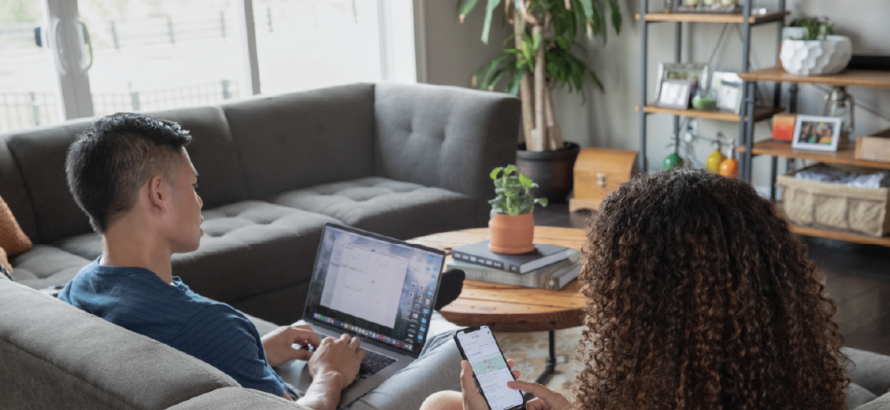
More than half of U.S. adults bank online, according to Pew Research Center, and about a third of them bank via cell phone. Given the popularity, it’s important to ask; Is online banking safe?
Despite concerns about identity theft, online banking is as safe as any other banking transaction, says Murray W. Kenyon, senior vice president of technology risk management for BITS Financial Services Roundtable. However, when consumers conduct transactions online, they need to be conscious of their decisions because certain online behaviors can put them at risk, he adds.
Here are six online banking security tips to help keep your money and identity safe:
1. Change your password regularly
The best thing consumers can do to protect themselves is to change their passwords every 90 days, Kenyon says. Never use a word and always use a combination of upper and lower case letters, numbers and special characters. Words are too easy to guess, particularly if they’re related to your persona, such as your mother’s maiden name, the street where you live or your pet’s name.
The longer the password, the better, Kenyon adds. Many government agencies require passwords to be at least 14 characters. Kenyon offers this tip for creating a long password that is easy to remember: Pick a well-known verse and add numbers and letters to it that will be easy to remember. Make your password even harder to crack by replacing letters with special characters.
2. Refrain from using public computers or Wi-Fi when banking online
Anytime you are using public Wi-Fi, you have to assume that someone can access your browser history and your password. So if you are doing anything that requires you to log in, such as banking or reading email, you are putting yourself at risk, Kenyon says. This applies even if you have your email or other password-protected sites set up to automatically insert your password for you and log in.
3. Check your bank statement regularly
Check your bank statement each month, Kenyon suggests. Even though banks are highly skilled at recognizing fraud, particularly with credit cards, they might not always be able to catch every questionable transaction among every customer, so you should be sure to review your statement monthly.
4. Use licensed anti-virus software
Even Mac users need to invest in good anti-virus software, Kenyon says. Be sure to check for updates frequently. Either set your computer to check for updates automatically and alert you or plan to check yourself every Saturday or Sunday morning. But, Kenyon warns, don’t set your computer to download the update automatically. Downloading manually provides the best protection from malware and viruses.
5. Disconnect your Internet when not using it
Computers that are always connected to the Internet are vulnerable. Most consumers get their internet through their cable company and the Wi-Fi is always on. Be sure your Wi-Fi is password-protected, Kenyon states, and if you can, it’s a good idea to disconnect your computer from the Wi-Fi when you’re not using it.
6. Type your bank URL every time instead of using email links
Never click on a URL in an email, even if it looks like it’s from a trusted source, Kenyon says. “The email and link might look very legitimate but it could take you somewhere you don’t want to go,” he says. Always retype the URL into your computer before using it or bookmark your bank’s actual authenticated site, especially if you are using it for an online transaction or to provide sensitive information.
Learn more about cybersecurity and keeping your identity safe from cybercrimes.
NFM-21563AO



